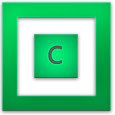Howdy, Stranger!
It looks like you're new here. If you want to get involved, click one of these buttons!
covecube.com
community.covecube.com
blog.covecube.com
wiki.covecube.com
bitflock.com
stablebit.com
Categories
Poll
No poll attached to this discussion.In order to better support our growing community we've set up a new more powerful forum.
The new forum is at: http://community.covecube.com
The new forum is running IP.Board and will be our primary forum from now on.
This forum is being retired, but will remain online indefinitely in order to preserve its contents. This forum is now read only.
Thank you,
Permission issues on new server after migration from WHSv1
I've got an email into the support people regarding this issue, but as I was googling around on my own this morning I found this forum and thought I might get some insight here as well.
Basic problem: all of my files in the DrivePool are inaccessible. VLC can't open videos, Word docs fail to open, etc. When I attempt to copy the file (using Explorer when I'm logged into WHS2011 via RDP) to the server's desktop, I get Error 0x80070780: The file cannot be accessed. When I open the individual drives and copy the same file, it works fine.
What I've done so far: Everything!  The history works like this:
The history works like this:
- Installed WHS 2011 onto a new 2tb drive.
- Removed one of my 2tb drives from WHSv1 and installed it into WHS2011
- Added both drives to the DrivePool, without formatting or anything
- Created my Shared folders and moved them to the DrivePool via the Dashboard
- Copied everything in \de\shares from the WHSv1 drive to the DrivePool
At this point, copying data took an extraordinary amount of time. With another 8tb of data to go, I emailed support and they sent me directions to avoid having to copy it. So I went through the following steps:
- Added all my old WHSv1 drives to the WHS2011 server
- Added all the old drives to the DrivePool, without formatting or erasing them
- Killed the StableBit DrivePool service
- On each drive, I moved everything from \de\shares to \Poolpart.(x)\ServerFolders
- Deleted the DrivePool metadata in the \ProgramData\StableBitDrivePool\Service\Store folder
- Restarted the service
- Applied permissions for my users via the Dashboard
- Used the Windows Server Solutions troubleshooter tool and ran the "Reset NTFS Permissions on Pool" function (from here: http://wiki.covecube.com/StableBit_DrivePool_Utilities)
- Rebooted the server (the directions didn't include this step, but I figured it certainly couldn't hurt)
After the server booted up, I opened up \\servername and all the shares were there, along with all the data. However, none of the files would open. At this point I started some troubleshooting, and figured out that everything seems to work if I copy the file from the actual drive to the server's desktop, then back to \\servername\drivepool (note: I get the "file cannot be accessed" if I copy of the existing file, but it works if I put it into a temp dir somewhere else). I've been staring at permissions boxes all morning and can't see a difference in the files, though.
I've also tried taking Ownership of E:\ (my DrivePool virtual drive) via the instructions at this link: http://forum.covecube.com/discussion/574 but it hasn't worked either.
Any tips? I'd love to get this solved! 

 Download your copy of the StableBit DrivePool, StableBit Scanner or StableBit CloudDrive here
Download your copy of the StableBit DrivePool, StableBit Scanner or StableBit CloudDrive here Follow Covecube on Twitter.
Follow Covecube on Twitter.
Comments
I could use some help, though:
- This might not be possible, but once I get the files I can off the drive, I'd like to try using some sort of recovery software to recover the original files I overwrote. I know there's a small chance, and none of the data is extremely important, but if it works it might save me a bunch of hours re-ripping CDs and DVDs, and re-downloading various software. Any suggestions?
Thanks for the mention of recuva, as soon as I manage to get all my "real" data off the thing safely I'm going to give it a shot. In the meantime, no more writing to that disk!